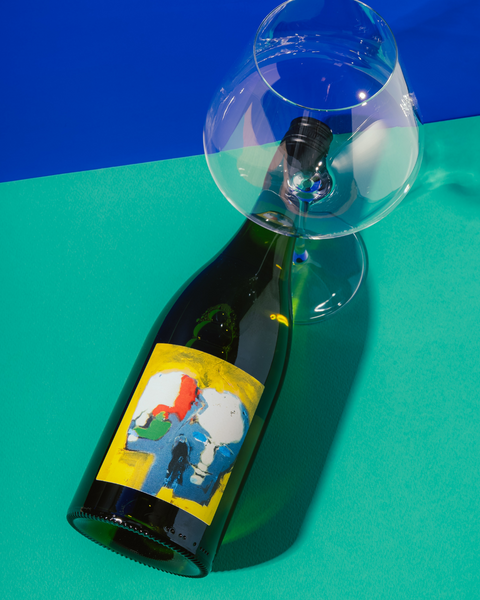November '23

"Every vineyard is someone's dream on a patch of dirt."
As the days get longer we’ve continued further south, past the Prom’ (see Wilson’s Promontory, which was once connected to Tasmania) and have sailed across the Bass Strait to Lutruwita / Tasmania. Chardonnay hasn’t been on the menu since January, and is well overdue, so we went straight to one of the finest winemakers on the Apple Isle for the 2022 Dr Edge Tasmania Chardonnay.
The island state of Tasmania is not only home to some of Australia’s top cool-climate wines, but is considered to have one of the nation’s brightest viticultural futures: particularly in terms of climate. With roughly 2000 hectares under vine (about the size of Barolo in Italy), Tasmania is a small growing region largely dedicated to premium wine.
Although Tasmania is still officially only recognised as a single GI (geographical indication), there are many unique growing areas scattered across the island producing distinct wines. This month’s wine is a blend of multiple sites that creates a ‘greater than the sum of its parts’ expression that we are enamoured by. It’s a blend of Tamar Valley (65%) and Derwent Valley (35%) fruit. Pressed to old oak casks, the juice is fermented naturally, matured for 9 months on lees with some casks containing small amounts of whole Chardonnay fruit clusters and bottled without fining agents.


The wine region
The Tamar Valley is in Tasmania’s top end; starting north of Launceston along the banks of
the Tamar River until it meets the Bass Strait. The growing region enjoys a similar climate to Chablis in France, and we see bucketloads of Chablis’ textbook mineral texture in this wine. Pinot Noir is the most widely planted variety here, but Chardonnay and Riesling are next in
prominence.
The Derwent Valley extends inland northwest and east of Hobart at the mouth of the Derwent River. Interestingly, Hobart is Australia’s second-driest capital city with 570 millimetres of annual rainfall. Head upstream to the regional stalwart Meadowbank Wines (where Peter serves as head winemaker, maybe the source of fruit for this wine?) and that drops considerably to roughly 460 millimetres a year. Dry, cold: perfect for great quality Chardonnay.



For Peter Dredge, his winemaking path began with a blow.
Dredge had a promising sporting career derailed by an errant discus that struck him in the head. The impact resulted in a severe brain injury, and he lost hearing in his left ear. His aspirations of becoming a professional Aussie Rules player lost momentum during a year and a half of rehabilitation. Once he regained his health and footing, he opted for a gap year, immersing himself in a harvest experience in the Adelaide Hills at Petaluma.
Transferring his physical therapy credits to agricultural sciences, Peter worked his way up to a senior winemaking position at Petaluma, specialising in white and sparkling production under the guidance of Brian Croser. A sabbatical in 2005 led him to Germany to work with Dr. Loosen, then to Hungary, Italy, and France, primarily studying Riesling and Pinot Noir. Dissatisfied with the Adelaide Hills' climate after a 2008 heat wave devastated their Chardonnay and Pinot Noir crop, Peter decided to pursue his cool climate aspirations in Tasmania.
His journey in Tasmania involved several years at Hardy’s with Bay of Fires (known for cool climate whites and Pinot) and its sister company, House of Arras (specialising in sparkling), sourcing fruit from 13 growers across the region. During this period, he gained a profound understanding of Tasmanian terroir, traversing the 200-mile stretch from north to south, exploring various subregions with volcanic to alluvial clay soils.
In 2015, Peter and his partner relocated from northern Tasmania to Hobart, where he established Dr. Edge, a moniker earned back in 1998 at Petaluma. This name was decidedly preferable to being associated with extracting mud from the bottom of a river. His cellar ethos revolves around crafting wines that are "unashamedly soft-handed": fresh, light, and textured. These qualities earned him the Young Gun of Wine People's Choice award in 2017. While his Petaluma days had him convinced that single vineyard wines were the only acceptable route, his experience sourcing fruit for Hardy's prompted a change in perspective. The Dr. Edge portfolio thrives on fruit from all corners of Tasmania, allowing Peter to indulge in experimenting with blends of clones and vineyard sites.


